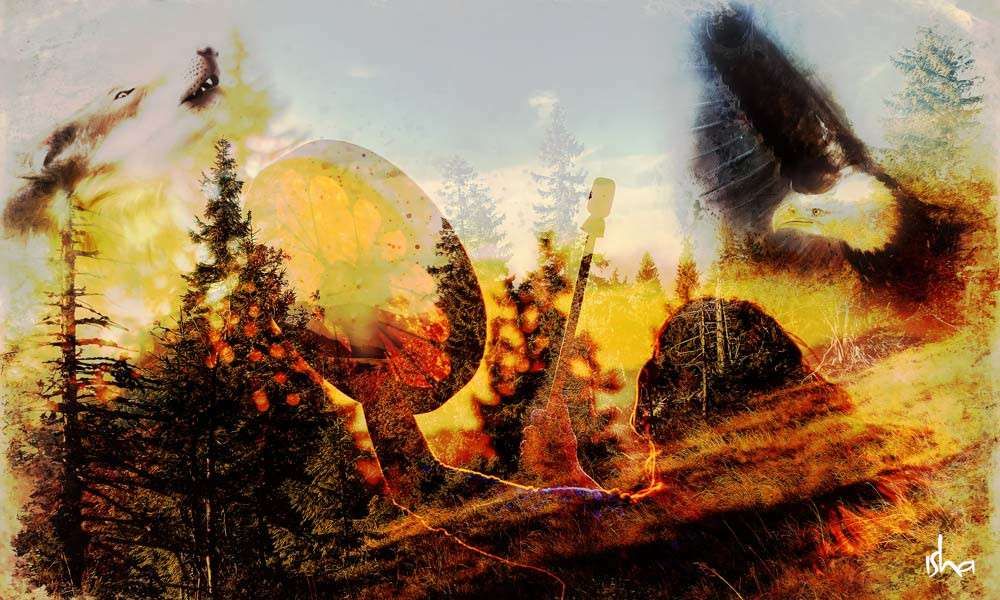What is Shamanism?
Sadhguru explains a few aspects of shamanism and why its practices were never given much significance in the Yogic sciences.

The Tradition of Shamanism in Native American Cultures
Sadhguru: There is a whole tradition of shamanism, particularly in the Native American cultures. Even today there is any amount of talk about how a Native American shaman transforms himself into an eagle, a fly, a wolf or some other form. These are not just stories, it is very much a possibility that one can transform their form if they wish to. People taking on other forms is not unheard of. It is present in almost every part of the world.You will hear about shamans becoming an eagle or a wolf because these two forms are very common for them. That was not unheard of in the Yogic culture, but it was looked down upon. That is because this is not spirituality, this is occult. Here, our occult scientists – I call them scientists because they are that kind – do not bother to convert themselves into a bird or an animal because there are risks involved. It was considered a basic way of doing things, because when you take on the form of something else, this body has to be preserved, and it can always be misused.
Subscribe
The Dangers of Shamanic Practices
There is one famous incident in the Yogic culture that illustrates this. One great sage and mystic who ranged across Tamil Nadu was Sundaranathar. One day, he saw a cowherd named Moolan who had died in the forest after being bitten by a snake. When he died, the cows that he was taking care of were so deeply involved with him and had such love for him that they refused to leave him in the forest and cried out as if they had lost a mother. Sundaranathar witnessed this situation and he was so moved by this.
Out of his compassion, he thought that he should not let them remain in grief like this. So he went into the hollow of a tree, left his body there and entered the dead body of Moolan, the cowherd. This is known as parakaya pravesham. When Sundaranathar in the body of Moolan sat up, the cows were so happy. He took the cows back home.
But what he did not realize was that it would be difficult to leave the house and once again go back to the jungle because there were some social commitments there. His wife was aghast to see that her husband was completely uninterested in her or the situation in the household. This led to a delay in his return. When he came back to the forest later in the night, to his dismay he found that some passersby had seen a dead body in the hollow of a tree and as it is the culture of this land, if you see a dead body you must give it a proper cremation, they cremated the body.
Now he was stuck in Moolan's body. He went back to the village but then he saw that there was no way he could involve himself with Moolan's life. The cattle, the wife, the society around were not what he was looking for in his life. So he sat with his eyes closed. He opened his eyes only once a year on Mahashivratri. Every time he opened his eyes, he came out with a gem of insight and wisdom. This was his gift to the people who cared for him when he sat with eyes closed.
The Occult Scientists of India
Because of this danger, the occult scientists in the Yogic culture evolved other kinds of methods. They do not take on other forms themselves. Instead, they pick other forms and make the forms work in a certain way. They usually use a chicken. The chicken has to be young and vibrant. They release the chicken's life and use that life form to do certain things for you. Rather than taking on the chicken's body, they make that chicken do things.
They evolved more sophisticated methods to deal with the same things. The occult sciences have many aspects to it. If we want to practice certain things, we could, but we do not allow such things here, because what is the point? All that will happen is that you will get into more serious levels of ignorance. If you could change bodies, you will get more entangled in the process of life than you are right now. Just the sheer power of it destroys you in so many ways.



